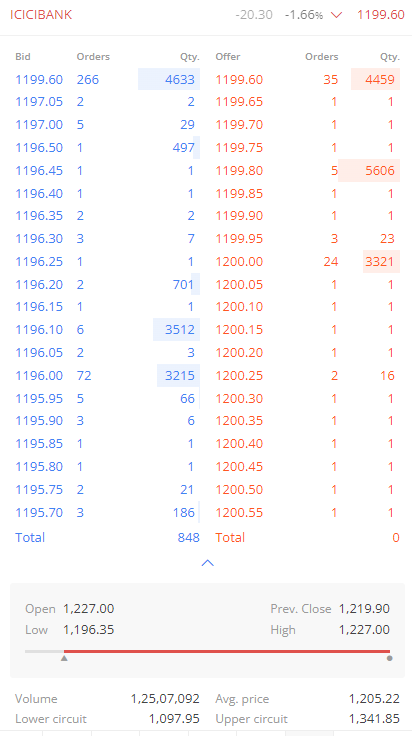
SEBI revises F&O eligibility norms
SEBI changed the eligibility criteria for stocks to be traded in the F&O segment on 30 August 2024. This framework to define the eligibility criteria was last established in 2018. SEBI’s rationale for these changes is that the average market size, turnover, and delivery values have gone up threefold since then. So it seems ideal to hike the guardrails.
The updated eligibility criteria for a stock to qualify for F&O trading are as follows:
- The stock must have been in the top 500 in terms of average market capitalization and daily traded value for the last six months.
- The stock’s median quarter-sigma order size (MQSOS) over the last six months must be at least Rs 75 Lakhs. This figure was Rs 25 Lakhs previously.
MQSOS is the amount needed to move a stock’s price by a quarter of its standard deviation over the past six months. (My colleague Faisal Mohammed elaborated on this more; you may check the footnote to understand the exact calculation.) - The stock’s market-wide position limit (MWPL) over the last six months should be at least 1500 Cr, up from Rs 500 Cr previously.
MWPL for a stock is 20% of its free-float market cap or 30 times its average daily traded value over the preceding month, whichever is lower.
In the F&O segment, MWPL is the maximum number of a stock’s open F&O contracts that can be held in the market. Open F&O contracts or Open Interest (OI) are those contracts that have neither expired nor been squared off. - The average daily delivery value (ADDV) of the stock over the last six months should be Rs 35 Cr, up from 10 Cr previously.
ADDV is the average of the daily value of delivery trades in a stock. Delivery trades are those where the investor trades to take delivery of the stock in their demat account.
If a stock already in the F&O segment fails to meet any of the four criteria, it will exit the F&O segment. The stock in the derivatives segment will continue to be in the segment as long as it meets the criteria on at least one exchange.
However, a stock could be eliminated from the segment despite meeting all the criteria. Here, the Product Success Framework (PSF) comes into the picture. PSF requires that in the last six months,
- The clients of at least 15% of all brokers or 200 brokers, whichever is lower, must have traded at least one derivative contract on the stock.
- The stock must have traded on at least 75% of the trading days
- Average daily turnover (F&O premium) must be at least Rs 75 Cr
- Average daily notional open interest must be at least Rs 500 Cr
PSF applied only to index derivatives, but the latest SEBI circular extends the framework to stock derivatives, too. Adherence to the PSF criteria will be reviewed on the 15th of every month.
What is the use of such stringent criteria? Stocks with smaller delivery volumes or market capitalization are at a higher risk of manipulation, so these guardrails act as a disincentive for manipulators.
Moreover, PSF strives to ensure that a small number of trading members are not gaming the system by engaging in circular trading.
This is one of the many efforts by the regulator to improve liquidity, curb market manipulation, and protect investors.
Understanding Median Quarter Sigma Order Size of a Stock
The median quarter sigma order size of a stock refers to the amount required to cause a quarter sigma (a quarter of the standard deviation or Value at Risk (VaR) of the stock) move in the market by placing a market order. This is calculated using snapshots of market depth from exchanges for stocks in the top 500 securities list.
Example Calculation:
- Determine Daily Sigma:
- For ICICI Bank stock, the VaR is 8.40%.
- Daily sigma is calculated as: Daily Sigma=8.40/ Sqrt(250)≈0.52%
Calculate Quarter Sigma:- A quarter of the daily sigma is: Quarter Sigma=0.52/4≈0.13%
- Calculate the Price Impact:
- If ICICI Bank is trading around ₹1199.60, a 0.13% move would be: Price Impact=1199.60×0.13%≈1.55 points
- Market Depth Analysis:
- Consider the market depth from Kite, showing 20 offers between ₹1199.60 to ₹1200.55, covering a range of 0.95 points.
- Summing up the quantities available in this range gives 13,440 shares.
- The cost to purchase these shares would be approximately ₹1.6 Crores.
- Even if you buy the entirety of the visible market depth for ₹1.6 Cr, it won’t move the stock price by a quarter sigma. You would practically need more than that.
Based on this analysis, the stock (Reliance, in this example) has a median quarter sigma order size large enough to qualify it for Futures and Options (F&O) trading. This qualification is essential for assessing liquidity and market impact, making it a useful metric for market participants.


Apako means sebi ko aur government ko retail trader ki etani hi care hai to aap Jo excessive taxes and charges lete hi oo band Karo..derivative ka to chhodo apane equity me bhi capital gain tax increase Kiya hai aur ek retail trader ko scam se bachane ke liye educational videos official platform var available kare ..aur aap Jo derivative segment me entry barigate laga Rahe ho lot size increase ke naam nam ka oo ek tarike se aacha hai par aap taxation decrease kare .. ye rule ke wajase ek disciplined trader ka loss ho raha gai
All this marathon exercise by sebi jst to divert liquidity from SE to Banks.Its really horrible.